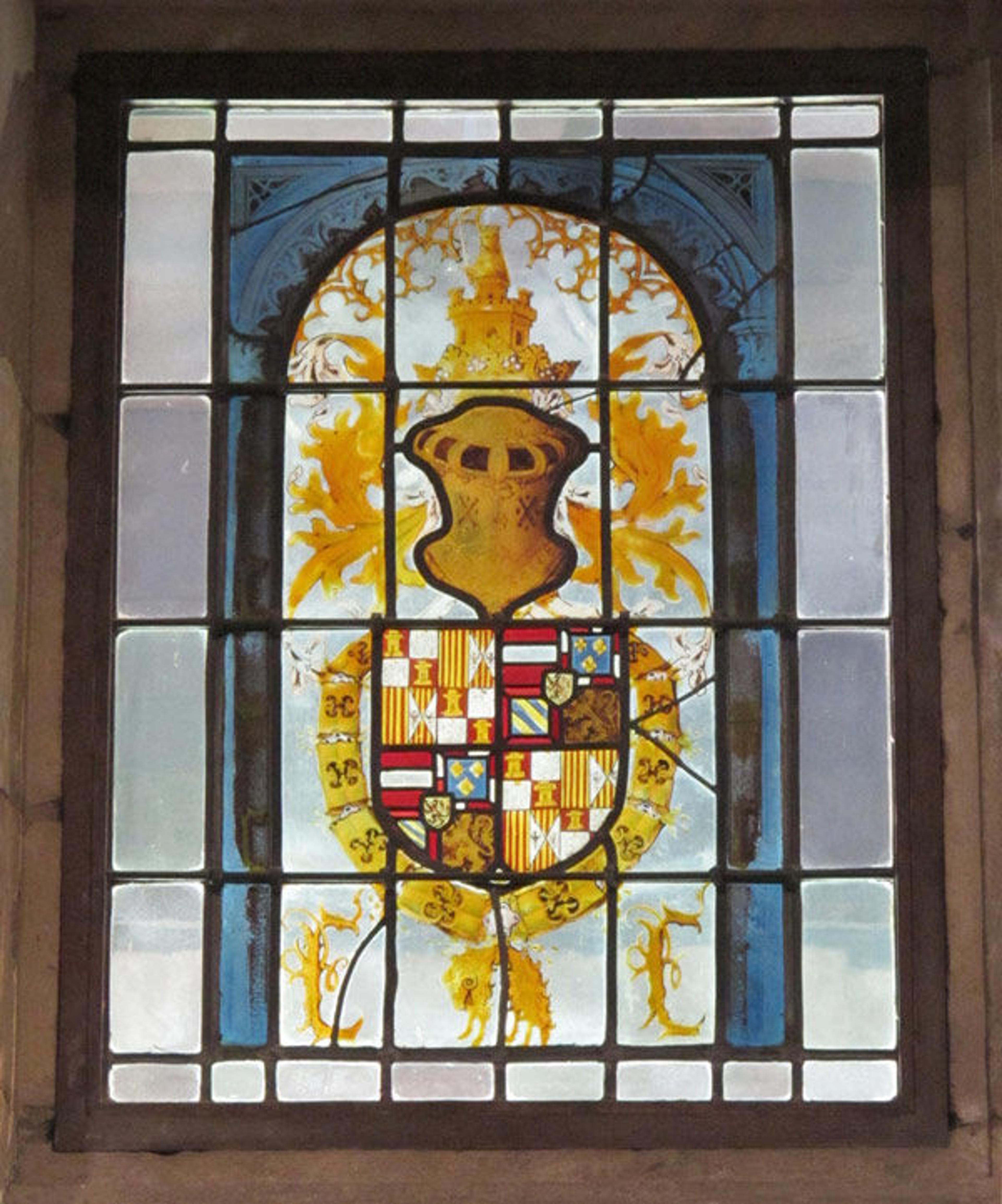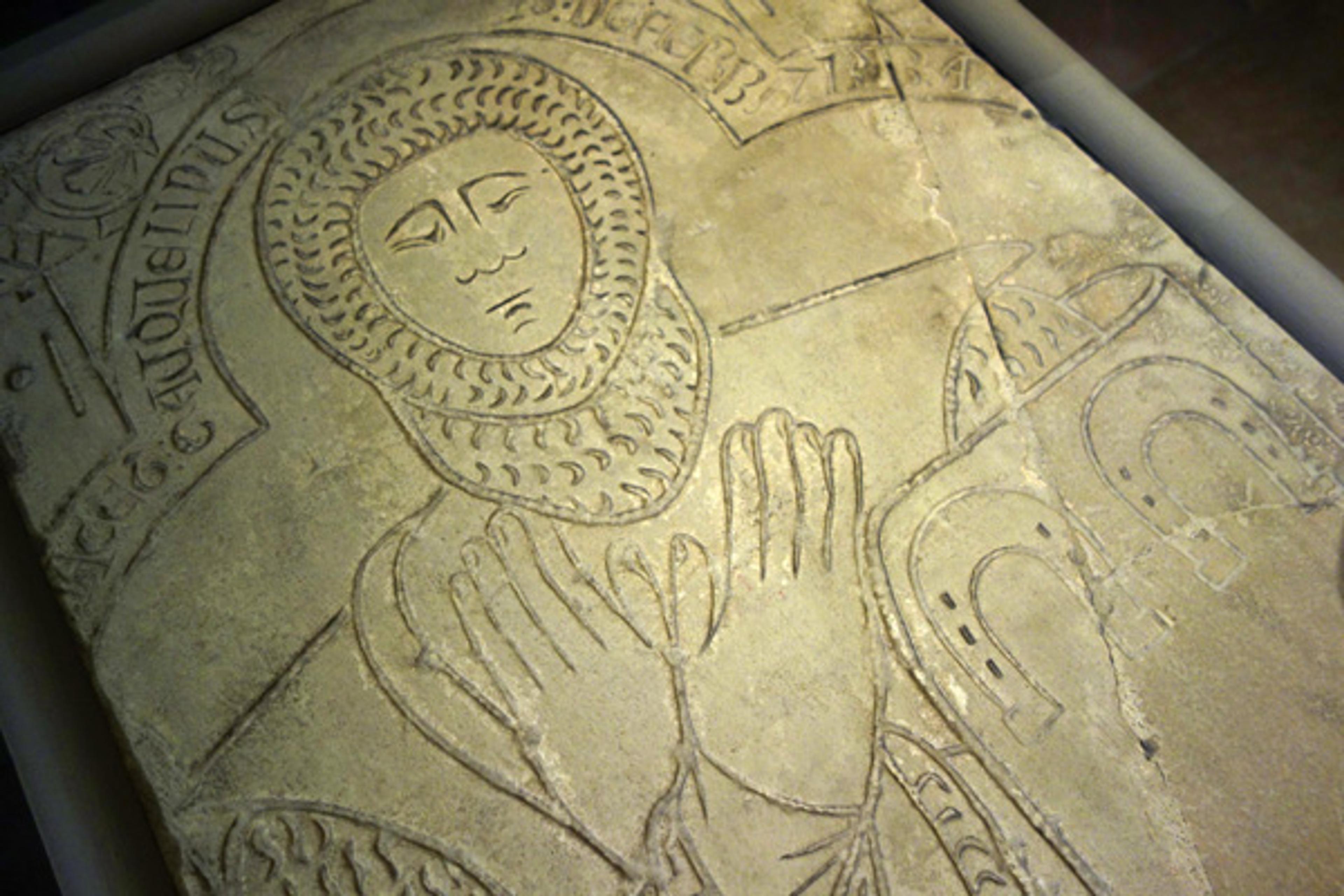The Garden in Heraldry: A Badge of Garlic, Please

Fig. 1. Heraldic arms of the Rueppen von Pfeilberg in Germany. Image courtesy of the Bavarian State Library
«All sorts of plants have come to be cultivated on the heraldic shield. Roses grow there abundantly, as do lilies, which are usually depicted in the graceful and stylized guise of the fleur-de-lis. Prickly thistles appear, warning the beholder not to touch, and fields of wheat grow bountifully, suggesting the wealth of land and the richness of harvests.»
All manner of trees grow in the heraldic forest, as well. From the great oaks, of course, to pine trees and even to palms, heraldic trees are found in whole or in part. They stand in their full stature or are represented with their leaves strewn across a shield. They do duty in their smaller parts, too, as acorns or apples, walnuts or pears.
Common plants are arranged side by side with the unusual and unexpected. Two sets of three plump turnips (Brassica rapa subsp. rapa), for instance, grace the first and fourth quarters on the arms of the Rueppen von Pfeilberg in Germany (fig. 1). This common root vegetable was apparently carried on the shields of its knightly bearers with as much familial pride as other families' fearsome snarling lions or sharp-clawed eagles.
While the appearance of a turnip on a shield is unusual, it wouldn't be far off the mark to assume that it's a lost allusion to a manor, or to a pun on a name or nickname. Heraldic allusions and puns are actually not unusual at all. In fact, they're quite common; coats of arms that contain them are called "canting arms." In the case of the Rueppen von Pfeilberg, that unexpected appearance makes sense if you know that a turnip in German is a Rübe (or Ruebe). Actually, this coat is a double pun. Pfeil is an arrow, and arrows appear as well.

Fig. 2. Heraldic Panel with Arms of the House of Hapsburg, ca. 1504–6. South Netherlandish. Pot-metal glass, white glass, vitreous paint, and silver stain. The Metropolitan Museum of Art, New York, The Cloisters Collection, 1937 (37.147.2). The sinister chief (upper left-hand corner) contains a quartering for Spain that depicts the castle of Castile and the lion of León.
The castles of Castile and the lions of León, both representative of Spanish kings, on a heraldic stained-glass panel at The Cloisters (fig. 2) and the horseshoes (fers de cheval) on the shield of the late thirteenth-century French knight, Jacquelin de Ferrière, on his tomb effigy in the Metropolitan Museum (fig. 3) are some striking illustrations of the use of puns in heraldry.

Fig 3. Partial Tomb Figure (Jacolinus de Ferrara, or Jacquelin de Ferrière) on Limestone Slab, late 13th century. North French. Limestone, wood. The Metropolitan Museum of Art, New York, Bashford Dean Memorial Collection, Funds from various donors, 1929 (29.158.761). Note the three horseshoes (fers de cheval) at the chief (top) of the knight's shield.
The Cloisters is also home to a ceramic plate that's both unusual and allusive. In this case, the snarling, rampant lion in the coat of arms at the center of the plate is not of as much interest as a circle of curious canting badges around it. (A badge in heraldry is simply an additional device that floats free of the confines of the shield. The famous red and white roses, of the War of the Roses, are a well-known use of heraldic badges [see "The Garden in Heraldry: 'Pluck a red rose from off this thorn…'" on The Medieval Garden Enclosed].)

Fig. 4. Deep dish, 1430–60. Made in Manises, Valencia, Spain. Tin-glazed earthenware. The Metropolitan Museum of Art, New York, The Cloisters Collection, 1956 (56.171.152). The dish bears the coat of arms of the delle Agli Family of Florence; the arms are surrounded by a circle of garlic cloves, or aglio in Italian—an allusion to the family name.
With both an amusing reference to the delle Agli family of Florence, to whom the coat of arms belongs, and perhaps a helpful serving suggestion for a food platter as well, a garland of garlic cloves encircles the family shield. The garlic—aglio in Italian—is, of course, a heraldic pun referring to the family name. In botanical descriptions, that's Allium sativum, which simply means the "cultivated garlic." While some German knights may have had their honorable turnip shield, this armigerous Italian family had its own in a badge of garlic.
R. Margelony
R. Theo Margelony is the associate administrator in the Department of Medieval Art and The Cloisters.